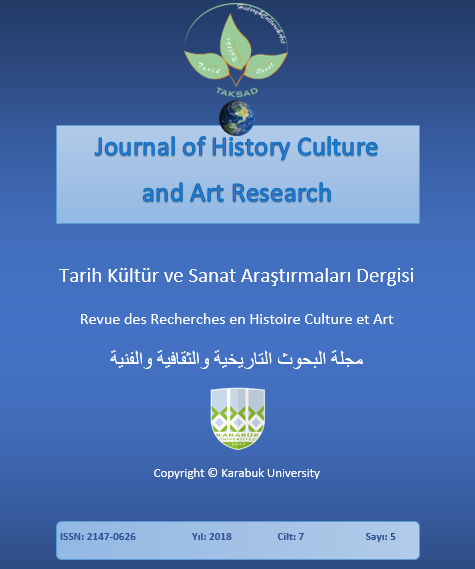Monetary Policy and Exchange Rates Pre- and Post-Global Financial Crisis: The Case of Turkey
DOI:
https://doi.org/10.7596/taksad.v7i5.1615Keywords:
Monetary policy, Structural breaks, Global financial crisis, Central Bank.Abstract
The aim of this study is to investigate the association between monetary policy and exchange rates in Turkey for two periods: Pre (December 2001-December 2007) and Post (January 2010-January 2016) global financial crisis (GFC). The ARDL, FMOLS, CCR and DOLS models are used to achieve the objective of this study. The results show that there is a significant impact of monetary policy, namely money supply and short-term interest rates, on exchange rates in Turkey before and after the GFC. The results suggest that the Central Bank of Turkey affected exchange rates after the GFC more than before the GFC.
References
Akar, C. & Çiçek, S. (2016). New monetary policy instruments and exchange rate volatility. Empirica, 43(1), 141-165.
Andries, A. M.; Căpraru, B.; Ihnatov, I. & Tiwari, A. K. (2017).The relationship between exchange rates and interestrates in a small open emerging economy: The case of Romania. Economic Modelling, 67, 261-274.
Backhaus, A.; Isiksal, A. Z. (2016). The impact of momentum factors on multi asset portfolio. Romanian Journal of Economic Forecasting, 19(4): 146-169.
Backhaus, A.; Zhakanova, A. & Fiedler, M. (2016). The robustness of momentum as an asset allocation instrument. Asia Life Sciences: The Asian International Journal of Life Sciences, 25(1): 349-366.
Çeliköz, Y. S. & Arslan, Ü. (2011). The effects of the interest rate volatility on Turkish money demand. International Business Research, 4(4), 286.
Choi, I. & Park, D. (2008). Causal relation between interest and exchange rates in the Asian currency crisis. Japan and the World Economy, 20(3), 435-452.
Clemente, J.; Montanes, A. & Reyes, M. (1998). Testing for a unit root in variables with a double change in the mean. Economics Letters, 59(2), 175–182.
Grauwe, P. & Grimaldi, M. (2001). Exchange rates, prices and money: A long‐run perspective. International Journal of Finance & Economics, 6(4), 289-313.
Ehrmann, M. & Fratzscher, M. (2009). Global financial transmission of monetary policy shocks. Oxford Bulletin of Economics and Statistics, 71(6), 739-759.
Frankel, J. A. (1979). On the mark: A theory of floating exchange rates based on real interest differentials. The American Economic Review, 69(4), 610-622.
Gujarati, D. N. (2003). Basic Econometrics. McGraw-Hill, USA, 4th. Ed.
Hnatkovska, V.; Lahiri, A. & Verge, C. A. (2016). The exchange rate response to monetary policy ınnovations. American Economic Journal: Macroeconomics, 8(2), 137-181.
Holtemöller, O. & Mallick, S. (2016). Global food prices and monetary policy in an emerging market economy. The case of India. Journal of Asian Economics, 46(3), 56-70.
Isiksal, A. Z.; Isiksal, H. & Jalali, H. (2017). The impact of foreign direct investment on Turkish economy 2010–2016, Economics, 5(2), 69-81.
Ojede, A. & Lam, E. (2017).The impact of changes in monetary aggregates on exchange rate volatility in a developing country: Do structural breaks matter? Economics Letters, 155(1), 111-115.
Öniş, Z. & Özmucur, S. (1990). Exchange rates, inflation and money supply in Turkey: testing the vicious circle hypothesis. Journal of Development Economics, 32(1), 133-154.
Perron, P. & Vogelsang, T.J. (1992). Non-stationarity and level shifts with application to purchasing power parity. Journal of Business and Economic Statistics, 10(3), 301–320.
Pesaran, M. H.; Shin, Y. & Smith, R.J. (2001). Bounds testing approaches to the analysis of level relationships. Journal of Applied Econometrics, 16(3), 289-326.
Phillips, P. C. B. & Hansen, B. E. (1990). Statistical inference in instrumental variables regression with I(1) processes. Review of Economic Studies, 57(1), 99-125.
Saraç, T. B. & Karagöz, K. (2016). Impact of short-term interest rate on exchange rate: the case of Turkey. Procedia Economics and Finance, 38(1), 195-202.
Sensoy, A. & Sobaci, C. (2014). Effects of volatility shocks on the dynamic linkages between exchange rate, interest rate and the stock market: The case of Turkey. Economic Modelling, 43(3), 448-457.
Stock, J. H. & Watson, M. W. (1993). A simple estimator of cointegrating vectors in higher order integrated systems. Econometrica, 61(4), 783-820.
Yilmazkuday, H. (2011). Monetary policy and credit cards: Evidence from a small open economy. Economic Modelling, 28(1), 201-210.
Yuksel, A. (2016). The relationship between stock and real estate prices in Turkey: evidence around the global financial crisis. Central Bank Review, 16(1), 33-40.
Zivot, E. & Andrews D.W. K. (2002). Further evidence on the great crash, the oil-price shock, and the unit-root hypothesis. Journal of Business & Economic Statistics, 20(1), 25–44.
Downloads
Published
How to Cite
Issue
Section
License
All papers licensed under Creative Commons 4.0 CC-BY.- Share — copy and redistribute the material in any medium or format
- Adapt — remix, transform, and build upon the material for any purpose, even commercially.
Under the following terms:
Attribution — You must give appropriate credit, provide a link to the license, and indicate if changes were made. You may do so in any reasonable manner, but not in any way that suggests the licensor endorses you or your use.
- No additional restrictions — You may not apply legal terms or technological measures that legally restrict others from doing anything the license permits.







